Wednesday, September 28, 2011
infinity elephants
Something a little different today. Vi Hart has a whole series of videos called 'Doodling in Math Class' which are awesome (which you can find on YouTube). While she disavows having a love for numbers, seeming to favour geometry over algebra, these are wonderfully talky videos with a real love of the beauty of mathematics (over the unloveable way it is too often taught) and drawing.
I confess, I think in a very similar way sometimes. I'm flumoxed by the question, "What are you thinking?", because I'm unconvinced anyone wants to hear this sort of monologue, though I'm charmed hearing hers.
I also love the Möbius Strip Musical Box.
Find more on her website.
Thursday, September 15, 2011
headgear in the wild
Speaking of interesting things on heads, I love the series of illustrations of animals in hats by Lisa Hanawalt featured on the hair pin in honour of New York Fashion Week. Be sure to check out the rest. (via Etsy Tumblr)





The colour blocking morbidity bonnet is the best thing ever. I think she's satirizing fashion with love.





The colour blocking morbidity bonnet is the best thing ever. I think she's satirizing fashion with love.
Wednesday, September 14, 2011
Collectors
Tiny Showcase brought illustrator Lauren Nassef to my attention this morning. I've been perusing her portforlio (and you should to - you won't be disappointed). The thing which seemed the most magpie-like to share was her collector series. After all, we've had animals, tea sets, and wunderkammers on heads before. This series of illustrations though, is for the specialist collectors:
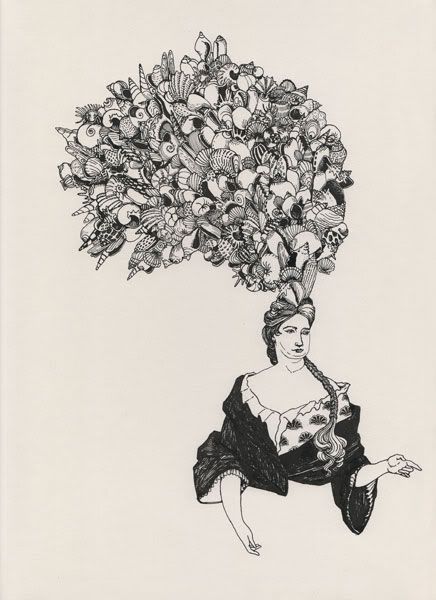
Duchess, shell collector
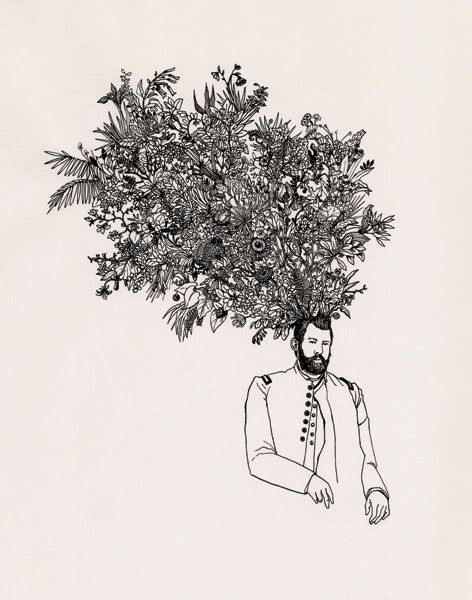
Edward Palmer, plant collector
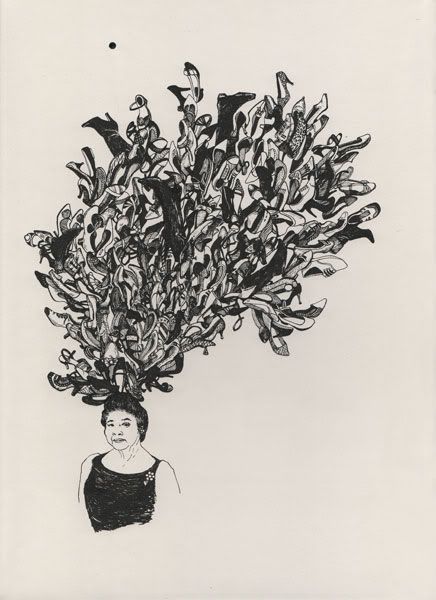
Imelda Marcos, shoe collector

Mr. A.C.D. Pain, mineral and gemstone collector
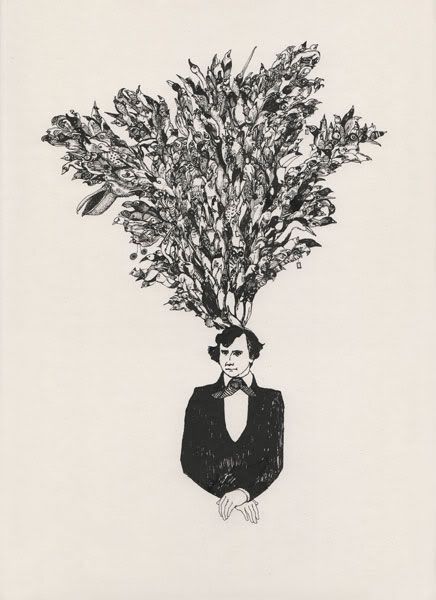
John Kirk Townsend, bird collector
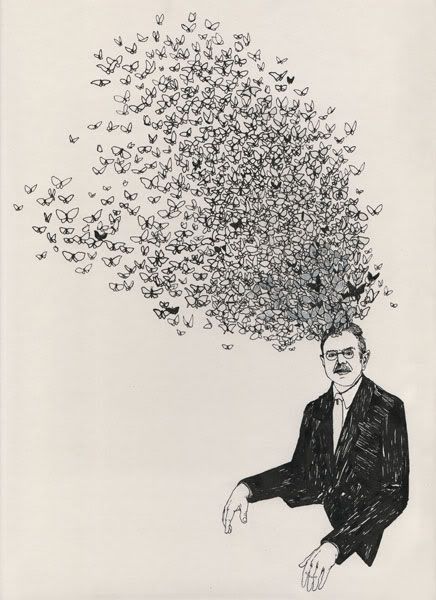
Andrey Avinoff, butterfly collector
Do look at her site. There is much, much more to see.

Duchess, shell collector

Edward Palmer, plant collector

Imelda Marcos, shoe collector

Mr. A.C.D. Pain, mineral and gemstone collector

John Kirk Townsend, bird collector

Andrey Avinoff, butterfly collector
Do look at her site. There is much, much more to see.
Monday, September 12, 2011
Automata
This tiny automaton, presented by German watchmaker, Peter Kintzing to Marie Antoinette in 1784, is central to the Châteu de Verseille's current exhibit of science and curiosities at the Court of Verseille. Hidden beneath her dress is the complex mechanism which allows for her naturalistic movements and musical playing of the dulcimer. The queen immediately presented her delightful toy to the Académie des Sciences, because she recognized this engineering triumph, a marriage of art and science of course, as something which should be commemorated.
(via TeenAngster)

 It reminded me of the karakuri ningyo, the 200 year old Japanese mechanical dolls, which I saw at the Canadian Museum of Civilization's "Japan: Tradition. Innovation." exhibit. The exhibit traced contemporary Japanese robots and society's fascination with robots back to the tradition of building these automata. The images show a plan from 'Karakuri Zuii' ('Karakuri - An Illustrated Anthology') published in 1796 and Chahakobi Ningyo (Tea Serving Doll) by SHOBEI Tamaya IX (via karakuri.info).
It reminded me of the karakuri ningyo, the 200 year old Japanese mechanical dolls, which I saw at the Canadian Museum of Civilization's "Japan: Tradition. Innovation." exhibit. The exhibit traced contemporary Japanese robots and society's fascination with robots back to the tradition of building these automata. The images show a plan from 'Karakuri Zuii' ('Karakuri - An Illustrated Anthology') published in 1796 and Chahakobi Ningyo (Tea Serving Doll) by SHOBEI Tamaya IX (via karakuri.info).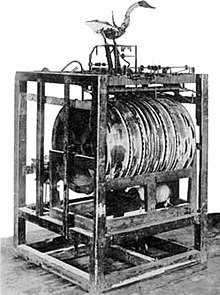 Also, having recently read Thomas Pynchon's Mason & Dixon I can't help but be reminded of Vaucason's mechanical (and digesting) duck. Given a choice I would rather an automaton which did something pleasant, like play music, or useful, like bring me tea, rather than eat and poop, but it is quite amazing to consider the range of movements and achievements of these proto-robots, more than two centuries ago. So much so, that in 1770 by Wolfgang von Kempelen (1734–1804) was able to hoodwink even educated court audiences with the Mechanical Turk, a chess-playing automaton hoax. (To build a chess-playing machine (which not only could move pieces appropriately, but beat highly-skilled human opponents) did take a couple more centuries, because playing chess involves much more than movements, it requires some artificial intelligence.) Vaucanson's more obviously useful output includes the first automated loom - employing punch-cards, foreshadowing 20th century methods for inputting data to computers.
Also, having recently read Thomas Pynchon's Mason & Dixon I can't help but be reminded of Vaucason's mechanical (and digesting) duck. Given a choice I would rather an automaton which did something pleasant, like play music, or useful, like bring me tea, rather than eat and poop, but it is quite amazing to consider the range of movements and achievements of these proto-robots, more than two centuries ago. So much so, that in 1770 by Wolfgang von Kempelen (1734–1804) was able to hoodwink even educated court audiences with the Mechanical Turk, a chess-playing automaton hoax. (To build a chess-playing machine (which not only could move pieces appropriately, but beat highly-skilled human opponents) did take a couple more centuries, because playing chess involves much more than movements, it requires some artificial intelligence.) Vaucanson's more obviously useful output includes the first automated loom - employing punch-cards, foreshadowing 20th century methods for inputting data to computers.There are also tales of ancient and medieval automata. The Book of Ingenious Devices published in 850 by the three Persian brothers known as the Banu Musa (Ahmad, Muhammad and Hasan bin Musa ibn Shakir) working at the House of Wisdom (Bayt al-Hikma) in Baghdad, Iraq, under the Abbasid Caliphate, includes many machines and automata, including a mechanical flute player described as the first programmable device.
